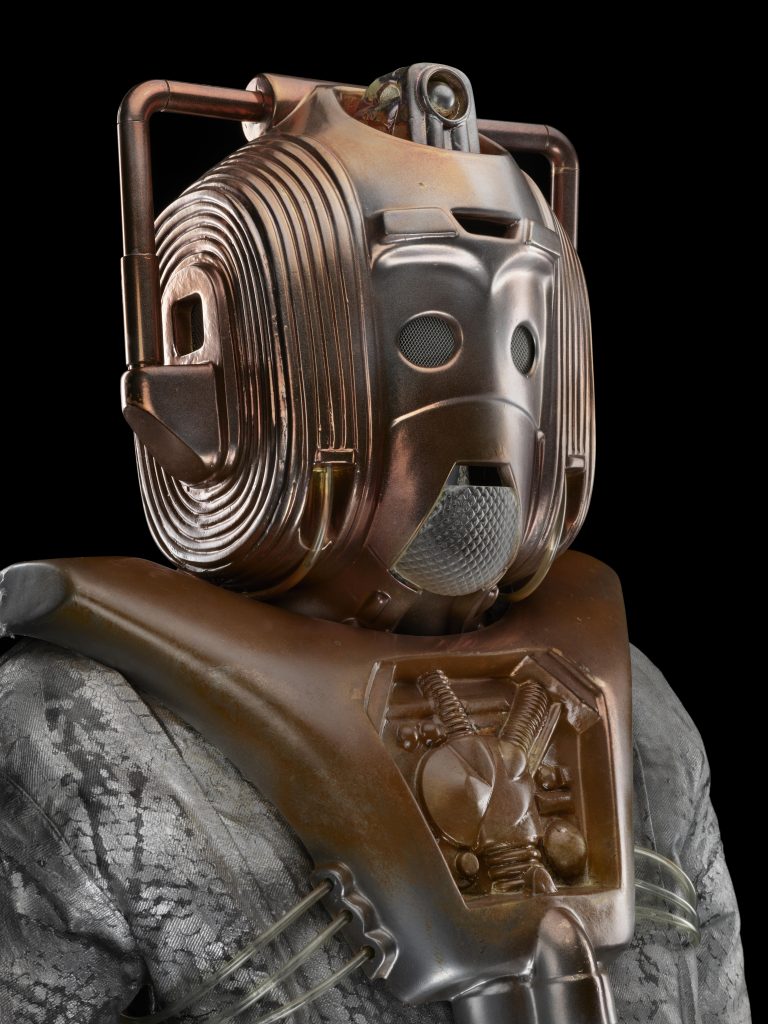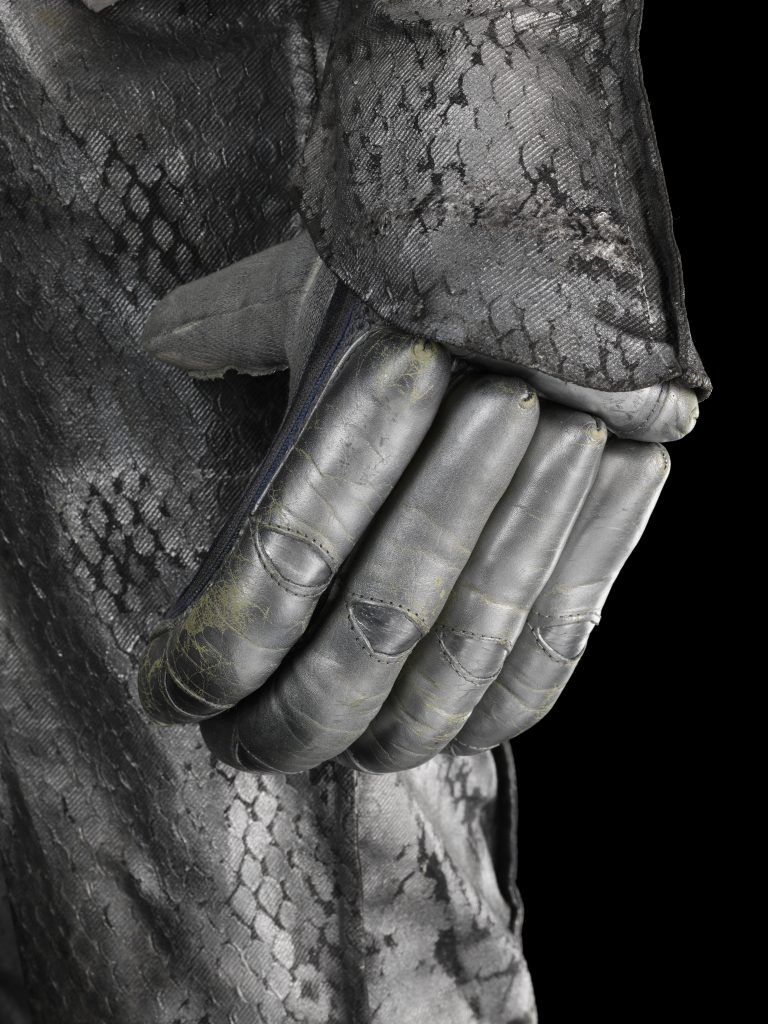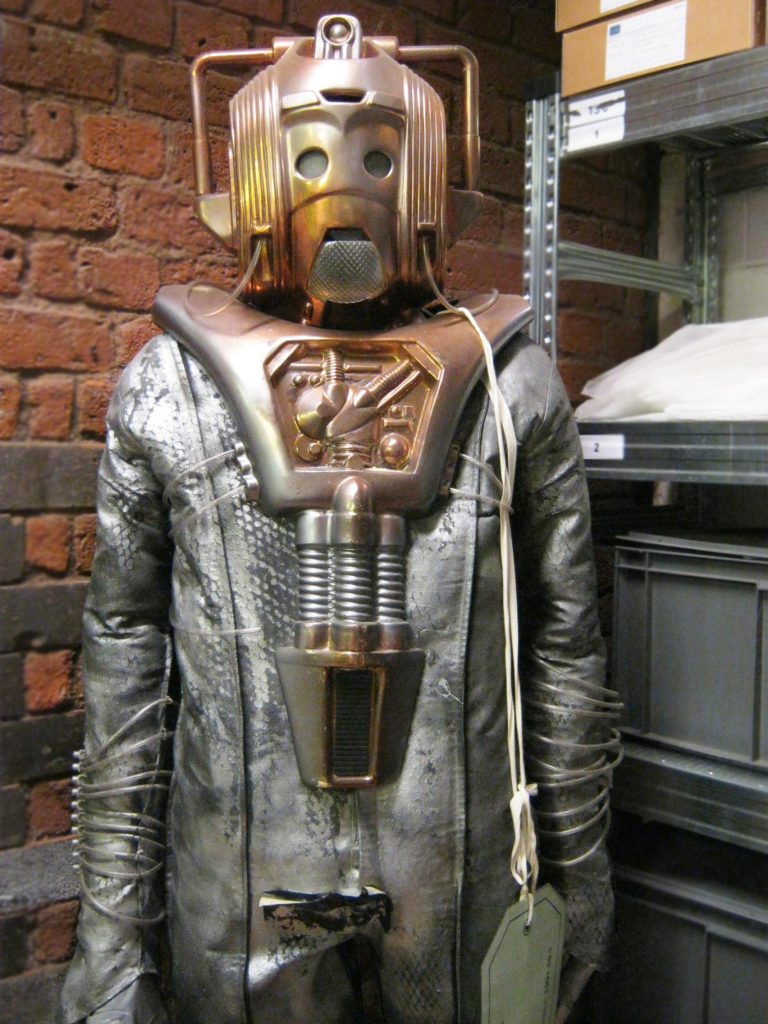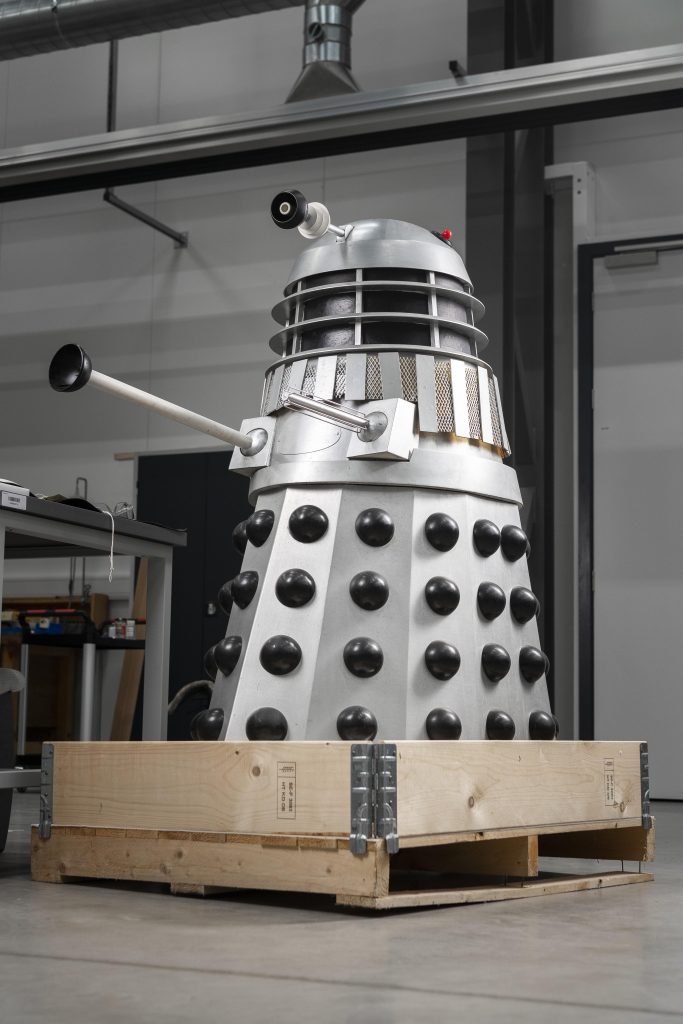Teams across Wroughton and London took on the challenge of conserving a Cyberman and Dalek. Conservators Sophie Croft and Ruth Nightingale detail their personal encounters with the formidable foes.
Cyberman: A 1980s Suit fit for a Cyborg
by Sophie Croft
Complete with silver-painted boiler suit, cricket gloves, rubber army boots and infamous side-handled fibre glass helmet, the Cyberman is a sight to behold. Produced in 1988 for the ‘Silver Nemesis’ serial, this member of the Cyber-fleet battled the Doctor in the grounds of Windsor Castle.

Infamous for terrifying BBC viewers, the imposing 6ft 2” Cyberman costume had the Conservation Team hiding behind our sofas for other reasons. Over time, the composition of spray paint, aging plastics and embrittled fabric had caused stability issues to the costume. Flaking paint, fabric tears and delaminating rubber were all consequential of the aging materials. The Cybermen costumes were also notoriously warm for actors to wear so over time, sweat is likely to have contributed to the embrittlement of the fabric.

The internal mannequin presented another dilemma to the Conservation Team as the internal mannequin had marginally shifted within the costume. The stance of the Cyberman had become less terrifying, more tottery. Small adjustments were required to reposition the internal mannequin without causing damage to the already embrittled fabric.

Our team carefully manipulated the leg of the mannequin by small increments to reposition the hip joint and improve the Cyberman’s stance. Tears were repaired with layers of Japanese Tissue impregnated with a Paraloid B-72 (a strong, but reversible acrylic adhesive) to join the tear and stabilise the area. Flaking areas of spray paint on the helmet and delaminating rubber on the boots were consolidated with polyvinyl acetate, a detaching glove was repositioned, and a loosened stitch was replaced. Finally, our Gallery Services Team assisted by building a new padded mount to safely secure the Cyberman during exhibit. The treatment was a success and the Cyberman was stabilised prior to the BBC 100 Anniversary display that opened in July 2022.
Conservators 1, Cyberman 0.
Dalek: Dr Who’s Nemesis
By Ruth Nightingale
Made of a frightening combination of plywood, fibreglass and repurposed household items, the Dalek is ready to strike fear into our hearts. The iconic character was turning heads in the conservation lab at the National Collections Centre from the moment it arrived.
While instantly recognisable, the Dalek needed help from the Conservation Team to have it looking suitably terrifying and ready for display. Over time, the Dalek had accumulated surface dust and dirt from being in storage, the weapons and eye stalk had been removed and the futuristic silver colour was lifting and detached in several places.

My first task was to locate and match up the pieces of the Dalek. Upon dismantling the body to check the integrity of the internal structure, I discovered a whole selection of weapons were hiding inside! I then had to check which weapons could be correctly fitted to the body in preparation for the display.

When checking the overall condition of the Dalek, I noted that the attachment points for the plunger were suffering from holding up the weight of such a long and surprisingly heavy piece. The wood on the main body had cracked and split, meaning it could no longer support the arm. I had to think up an alternative method of attachment. The object is on loan from the BFI National Archive, so the treatment had to be approved and reversible. The arms also had to be removable to avoid damage during transport to London. After some head scratching, I devised a plan to move the stress point away from the damaged areas and onto the internal structure. To finish, I gently warmed the vinyl around the head using a heat tool to make it flexible enough to adhere it flat, and I touched in the small chips of missing paint with a matching colour.

With the conservation treatment complete, the Dalek was ready for display in the Science Fiction exhibition, and to perhaps battle the Doctor once again!
To continue the fun, be sure to visit our Science Fiction exhibition and follow our Science Fiction Trail around the museum.